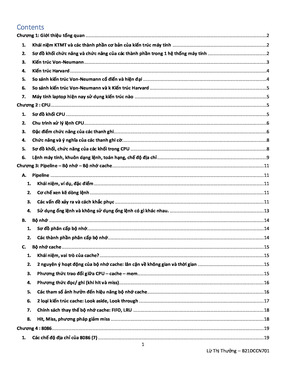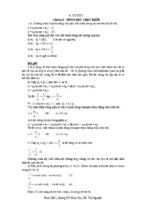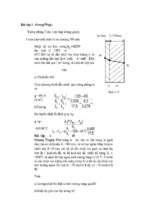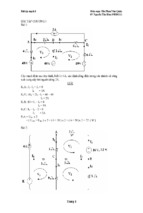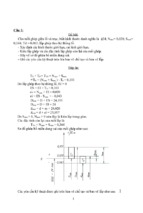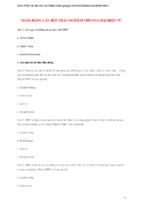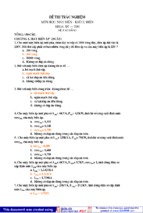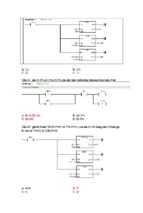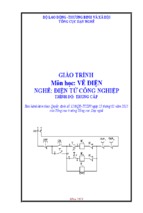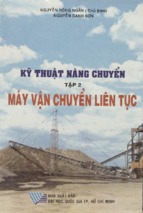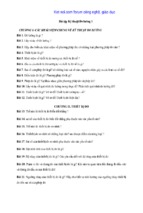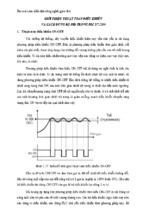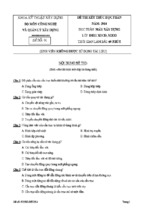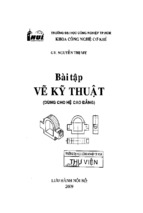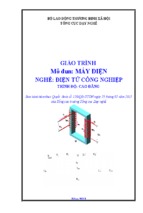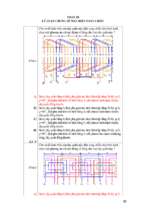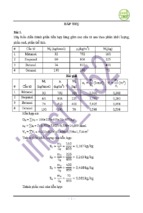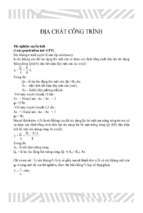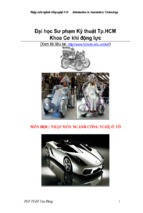vii
TABLE OF CONTENTS
ABSTRACT .............................................................................................................................. iv
ACKNOWLEDGEMENTS..................................................................................................... vi
TABLE OF CONTENTS ........................................................................................................vii
LIST OF TABLES.................................................................................................................... xii
LIST OF FIGURES................................................................................................................. xiv
CHAPTER I............................................................................................................................... 1
INTRODUCTION .................................................................................................................... 1
1.1. Background to and research gap of the study .......................................................... 1
1.2. Research problems and questions .............................................................................. 5
1.3. Rationale of the theory building research ............................................................... 10
1.3.1. Justification for the research............................................................................... 10
1.3.2. Importance of the research ................................................................................. 11
1.4. Methodology ............................................................................................................... 12
1.5. Contributions and Implications................................................................................ 14
1.5.1. Contributions........................................................................................................ 14
1.5.2. Implications .......................................................................................................... 16
1.6. Dissertation organization........................................................................................... 18
1.7. Chapter summary ....................................................................................................... 20
CHAPTER II ........................................................................................................................... 21
REVIEW OF THE LITERATURES....................................................................................... 21
2.1. Introduction ................................................................................................................. 21
2.2. Information system..................................................................................................... 22
viii
2.2.1. The phenomena of information ......................................................................... 22
2.2.2. The relationships between information and knowledge ............................... 24
2.2.3. The primacy of information ............................................................................... 32
2.2.4. Information in the field of information systems ............................................. 36
2.2.5. The need for a new conceptualization of organizational information......... 38
2.3. Pragmatism and systems thinking ........................................................................... 40
2.3.1. Pragmatism ........................................................................................................... 40
2.3.2. A systems thinking approach to organizational information ....................... 50
2.4. Middle range theorizing ............................................................................................ 53
2.4.1. The organization of theory-building research ................................................. 53
2.4.2. Systems pragmatism as the research paradigm .............................................. 54
2.4.3. Contextualism as the theory of methodology.................................................. 58
2.5. Chapter summary ....................................................................................................... 59
CHAPTER III .......................................................................................................................... 60
METHODOLOGY.................................................................................................................. 60
3.1. Introduction ................................................................................................................. 60
3.2. Methodological principles ......................................................................................... 61
3.3. Justification of the methodology............................................................................... 62
3.3.1. For the qualitative approach .............................................................................. 62
3.3.2. For the case study and the grounded theory ................................................... 64
3.3.3. Why case study?................................................................................................... 65
3.3.4. Why grounded theory? ....................................................................................... 66
3.3.5. Which grounded theory? .................................................................................... 67
3.4. Methods........................................................................................................................ 69
ix
3.5. Reporting...................................................................................................................... 74
3.6. Evaluation of the research ......................................................................................... 75
3.6.1. Research validity.................................................................................................. 76
3.6.2. The assessment of the emergent theory and the research process ............... 78
3.6.3. Assessment of the evidence grounding the theory......................................... 79
3.7. Research design........................................................................................................... 79
3.8. Pilot case studies ......................................................................................................... 84
3.8.1. VT company.......................................................................................................... 92
3.8.2. RM company......................................................................................................... 95
3.9. Criteria for the case selection and the number of cases ........................................ 98
3.10. Case study protocol .................................................................................................. 99
3.11. Research settings ..................................................................................................... 106
3.12. Data sources............................................................................................................. 106
3.13. Chapter summary ................................................................................................... 110
CHAPTER IV ........................................................................................................................ 112
ANALYSIS OF DATA AND RESEARCH FINDINGS ................................................... 112
4.1. Introduction ............................................................................................................... 112
4.2. Data collection ........................................................................................................... 113
4.3. Data analysis.............................................................................................................. 115
4.4. Empirical findings..................................................................................................... 135
4.4.1. Nature of organizational information and organizational information as
system ............................................................................................................................ 136
4.4.2. Organizational information formulation process and organizational
information formulation as habit production.......................................................... 166
x
4.5. Test of the emerging grounded substantive theory............................................. 170
4.5.1. Background......................................................................................................... 170
4.5.2. Testing propositions .......................................................................................... 171
4.5.2. Test case selection and theory testing ............................................................. 172
4.6. Chapter summary ..................................................................................................... 194
CHAPTER V ......................................................................................................................... 195
DISCUSSION OF THE FINDINGS AND RESEARCH IMPLICATIONS.................... 195
5.1. Introduction ............................................................................................................... 195
5.2. Discussions................................................................................................................. 196
5.2.1. Research finding 1: Organizational information-as-system ........................ 196
5.2.2. Research finding 2: Organizational information formulation as habit
production..................................................................................................................... 203
5.2.3. Research finding 3: Distinction among three information categories........ 211
5.2.4. Revisiting and extending the systems model of pragmatic information... 212
5.2.4. Relation between information-as-system and information system............ 229
5.2.5. A systems theory of pragmatic information .................................................. 238
5.3. Research implications............................................................................................... 244
5.3.1. Theoretical implications.................................................................................... 244
5.3.1.1. A pragmatic paradigm of information ........................................................ 244
5.3.1.2. An information view of organization theories and phenomena ............. 252
5.3.1.3. A theoretical framework for management research quality .................... 268
5.3.1.4. An information theory of organization ....................................................... 277
5.3.1.5. An information based theory of the firm .................................................... 280
5.3.1.6. A new taxonomy of knowledge production modes and beyond ............ 284
xi
5.3.1.7. A new framework of problem solving process .......................................... 286
5.3.2. Managerial implications ................................................................................... 288
5.3.2.1. A basis of organizational decision making ................................................. 288
5.3.2.2. A design of organizations.............................................................................. 289
5.3.2.3 Project proposal: a virtual clinic for SME management consultancy....... 291
5.4. Chapter summary ..................................................................................................... 297
CHAPTER VI ........................................................................................................................ 299
CONCLUSIONS................................................................................................................... 299
6.1. Introduction ............................................................................................................... 299
6.2. Summary of research findings and implications ................................................. 299
6.2.1. Organizational information as system............................................................ 299
6.2.2. Organizational information formulation as habit production .................... 302
6.2.3. Distinction among three information categories........................................... 304
6.2.4. Research implications........................................................................................ 304
6.3. Contributions of the research.................................................................................. 308
6.4. Limitations of the research ...................................................................................... 312
6.5. Directions for future research ................................................................................. 313
6.6. Concluding remarks ................................................................................................. 314
REFERENCES....................................................................................................................... 318
APPENDIX A. RESEARCH FLOW AND TASKS........................................................... 352
APPENDIX B. ILLUSTRATIVE FITNESS BETWEEN EVIDENCE AND
THEORETICAL CONSTRUCTS........................................................................................ 366
xii
LIST OF TABLES
Table
Page
Table 3.1. Theoretical categories emerged from pilot case studies ........................................ 92
Table 3.2. Properties and dimensions of the core categories.................................................. 93
Table 4.1. Organizations, cases, and embedded units of analysis .......................................... 116
Table 4.2. HY-ICT’s business of ERP implementation – an overview.................................. 119
Table 4.3. Code unitizing – an example at HY-ICT ............................................................... 120
Table 4.4. Concept categorizing – an example at HY-ICT .................................................... 121
Table 4.5. TP-DTF’s business of designing coastal ports – an overview............................... 122
Table 4.6. Code unitizing – an example at TP-DTF ............................................................... 123
Table 4.7. Concept categorizing – an example at TP-DTF .................................................... 123
Table 4.8. Dimensioning conceptual properties ..................................................................... 124
Table 4.9a. Labelling dimensions of conceptual property ‘structure’ – an illustration at TPDTF......................................................................................................................................... 126
Table 4.9b. Labelling dimensions of conceptual property ‘function’ – an illustration at TPDTF......................................................................................................................................... 126
Table 4.9c. Labelling dimensions of conceptual property ‘process’ – an illustration at TP-DTF
................................................................................................................................................ 127
Table 4.9d. Labelling dimensions of conceptual property ‘context’ – an illustration at TP-DTF
................................................................................................................................................ 128
Table 4.10. Conceptual properties and dimensions ................................................................ 131
Table 4.11. Three emerging fundamental patterns of organizational information ................. 133
Table 4.12. The emerged core category of organizational information.................................. 133
Table 4.13. The refined central category of organizational information ................................ 134
Table 4.14. Theoretical themes............................................................................................... 135
Table 4.15. Structure property – an illustrative example of its dimensions in case evidence 140
Table 4.16. Function property – an illustrative example of its dimensions in case evidence. 146
Table 4.17. Process property – an illustrative example of its dimensions in case evidence... 151
Table 4.18. Context property – an illustrative example of its dimensions in case evidence .. 155
xiii
Table 4.19. A descriptive model of organizational information as system ............................ 160
Table 4.20. Three basic patterns of organizational information ............................................. 161
Table 4.21. The distinction among three basic patterns of organizational information ......... 164
Table 4.22. A descriptive model of organizational information as system - fine tuned version
................................................................................................................................................ 166
Table 5.1. A foundational distinction among three information categories ........................... 213
Table 5.2. Situational actions in Habermas’ three worlds ...................................................... 218
Table 5.3. A systems based theory of pragmatic information ................................................ 240
Table 5.4. Some meta-theoretical assumptions of information categories ............................. 247
Table 5.5. A pragmatic paradigm of information ................................................................... 253
Table 5.6a. An example of information view of organization theories .................................. 268
Table 5.6b. An example of information view of organizational phenomena ......................... 269
Table 5.7. A literature review of research utilization ............................................................. 274
Table 5.8. Substantial problems of organizational decision making ...................................... 290
xiv
LIST OF FIGURES
Figure
Page
Figure 2.1. Pragmatism semiotics triangle ............................................................................. 49
Figure 3.1. A tentative triadic relation in business case......................................................... 94
Figure 4.1. Structural aspect (SCE) of organizational information........................................ 139
Figure 4.2. Functional aspect (UED) of organizational information ..................................... 145
Figure 4.3. Processual aspect (RDP) of organizational information ...................................... 151
Figure 4.4. Contextual aspect (IAH) of organizational information ...................................... 154
Figure 4.5. Time aspect (PPF) of organizational information................................................ 157
Figure 4.6. Epistemic aspect (OSI) of organizational information ........................................ 159
Figure 4.7. An explanatory model of organizational information as system (DKI model).... 164
Figure 4.8. An explanatory model of organizational information as system - fine tuned version
(DKI model – fine tuned version)........................................................................................... 167
Figure 4.9. A triadic model of organizational information formulation process (SDB model)
................................................................................................................................................ 170
Figure 4.10. A systems based model of organizational information (systems based DKI
model) ..................................................................................................................................... 171
Figure 5.1. Formally structural aspect (SOC) of information-as-system ............................... 217
Figure 5.2. Formally functional aspect (DCC) of information-as-system ............................. 220
Figure 5.3. Formally processual aspect (DWC) of information-as-system............................ 222
Figure 5.4. Formally contextual aspect (PIS) of information-as-system ............................... 226
Figure 5.5. Formally time aspect (PPF) of information-as-system ........................................ 227
Figure 5.6. Formally epistemic aspect (EPS) of information-as-system................................ 229
Figure 5.7. Proposal of management research quality (RRR)................................................ 278
Figure 5.8. A new taxonomy of knowledge production modes and beyond.......................... 287
Figure 5.9. Business case in the virtual clinic case base ........................................................ 294
Figure 5.10. Process, function, and context of business case information-as-system............ 295
1
CHAPTER I
INTRODUCTION
1.1. Background to and research gap of the study
For organization and management studies in general and knowledge
management (KM) as well as information systems (IS) literature in particular,
organizational knowledge or knowledge in organizations is more increasing interest
among academics and managers (von Krogh, 2009; Tsoukas & Vladimirou, 2001;
Orlikowski, 2002; Assudani, 2005; Jakubik, 2007). Nonaka, von Krogh and Voelpel’s
(2006, p.1200) confirmed that “the construct ‘knowledge’ was increasingly accepted
and now occupies a central and legitimate role in much mainstream organizational and
management theory”. However, though KM as a buzzword of the field of management
in the past decade (Baskerville & Dulipovici, 2006), or knowledge as a mainstream
vocabulary of management (von Krogh, 2009), Tsoukas and Vladimirou (2001, p.973)
still admitted that “organizational knowledge is much talked about but little
understood”. More concisely, Jakubik (2007, p.17), in a very recent review of KM
literature, also observed that “there are recent ontological and epistemological debates
about knowledge and the creation of knowledge”.
The first debate reflects the highly debatable nature of knowledge (Mingers,
2008, p.64), the fundamental matter of epistemology (Nonaka, von Krogh & Voelpel,
2006, p.1180), very elusive construct of knowledge (von Krogh, 2009, p.2), or a tricky
concept (Gourlay, 2006, p.1425). Very often, researchers proposed many knowledge
types (e.g. Courtney, 2001), or even many knowledge types along with many
knowledge perspectives (Alavi & Leidner, 2001). In addition, even the notions
‘knowledge’ and ‘organizational knowledge’ also interfer with each other. For
example, Broadbent (1998), by indicating some processes to transform the former to
the latter, more or less equaled the former with tacit knowledge and the latter with
2
explicit knowledge. Meanwhile, Spender (1998), drawing two classical distinct sorts of
knowledge (i.e. explicit and tacit) and two levels of analysis (i.e. individual and social),
maintained the umbrella ‘organizational knowledge’ and proposed a two-by-two matrix
of organizational knowledge types. Specifically, in conceptualization of knowledge in
KM and IS, regardless knowledge perspective adopted, the emphasis centered on
understanding the difference among data, information, and knowledge, and respective
implications as well (Alavi & Leidner, 2001, p.110), or “there has been, and remains,
considerable debate about the fundamental concepts of ‘knowledge’, ‘information’ and
even of ‘data’” (Mingers, 2008, p.62). For example, while the traditional view (e.g.
Ackoff, 1989) put the three concepts into a hierarchical ladder, Buckland (1991), in his
epistemological schema of information, proposed a completely different relation:
information as knowledge.
The second debate presents a highly fragile process of knowledge creation
(von Krogh, 1998; 2009). Such fragility of the knowledge creation process is from the
way people relate to each other in organization (von Krogh, 1998), or on the interaction
between individual knowledge and collective knowledge (von Krogh, 2009). In
addition, Jakubik (2007, p.17) recently observed that there is a shift in focus toward the
community view of knowledge and social embeddedness of knowledge, which
maintains that knowledge does not reside in individual’s brain, but is created in
communities. The new trend seems to look to accommodating two opposing
ingredients or attributes: mostly tacit and experience-based (p.17) but also social
interaction and process-based (p.14). In specific, for organizational knowledge creation
process, Li and Kettinger (2006) affirmed the role of information, which could be the
input or the evaluation criteria for the process. The former role was assumed by the
information processing view, the latter role was held by the evolutionary view of
knowledge creation process, and the mixed role was possibly suggested (e.g. Li &
Kettinger, 2006).
3
At this point, the two debates on knowledge and knowledge creation clearly
presented us with opportunities of research that attempts to make clear the knowledge
landscape full of complex and controversial (e.g. Jakubik, 2007). Such studies are to be
very significant because they, more formally, help to overcome the shortcomings of
conceptualizations of knowledge and knowing in organizations, which are not only
fragmented across disciplines but also incompatible and mutually contradictory
(Cecez-Kecmanovic, 2004). In fact, Jakubik (2007, p.17) recently indicated that the
literature is lacking in good explanations of, for example, how knowledge is created in
communities, and thus, providing opportunities for new contributions to the relevant
area.
However, we are also confronted with two following challenges. First, any
new conceptualization of organizational knowledge is requested to provide a
distinction among the notions of knowledge, information, and data. Meanwhile, it was
warned that (e.g. Stenmark, 2002) the relationships among the three concepts are more
complicated than that of the conventional knowledge hierarchy (e.g. Ackoff, 1989),
and that of the reversed hierarchy (e.g. Tuomi, 1999). In a similar vein, some
researchers recognized the problem of defining these entities in terms of each other:
unwise (Stenmark, 2002), or conceptual difficulties (Gourlay, 2006). More advancedly,
the distinction is asked to be in epistemological and ontological levels (e.g. Jakubik,
2007). It should be noted that until the very recent time, Mingers (2008) admitted that
the distinction is still a “considerable debate”, or in other words, this gap is still since
1940s (Gourlay, 2006). Second, any new conceptualization of organizational
knowledge creation is required that, with the assumption of knowledge as a social
construct, to present a more consistent, instead of highly fragile, process paying more
attention on the emerging community view of knowledge and social embeddedness of
knowledge (Jakubik, 2007). This is demanding because it has to cope with three
interdependent problems. The first problem is to reconcile the perspective of
4
knowledge as tacit knowing (i.e. process and experience based, see e.g. Polanyi, 1966)
and the perspective of knowledge as situated in organizational contexts (i.e. shared and
constructed in organizations through a continuous process of dialog and interactions,
see e.g. Brown and Duguid, 1991). The second problem is, with the widespread
assumption of information as an important factor for knowledge creation, to specify the
role of information in the process (Li & Kettinger, 2006). Indirectly, this definitely
affects knowledge typologies, and then the engine of knowledge creation process
(Gourlay, 2006). The final problem is to make sure the output (i.e. knowledge)
produced from the process to be truth, warrantiability, or justifiability at some extent
(e.g. Mingers, 2008). Previous studies on organizational knowledge seemed not to
provide a complete understanding of the process of knowledge creation (Li &
Kettinger, 2006). For instance, Nonaka’s model of organizational knowledge creation
(e.g. Nonaka, 1994; Nonaka & Takeuchi, 1995; Nonaka & Toyama, 2003), which is
one of the best known and most influential models in KM (Choo & Bontis, 2002), has
been criticized as flawed (Gourlay, 2006) with two shortcomings in specifications of
knowledge types (i.e. tacit knowledge) and in the engine of the knowledge conversion
process (e.g. combination and internalization) as well. Meanwhile, Li and Kettinger’s
(2006) evolutionary model of knowledge creation was more focusing on the
specification of the role of information in the process of knowledge creation, but still
missing some relation between knowledge and the dimension of truth. Mingers (2008)
very recently observed that almost no literature deals with the relation of knowledge to
truth or justifiability, even the work of the production and distribution of knowledge of
Machlup (1980), one of the founders of KM.
The debates, opportunities, and challenges just briefly mentioned above,
simultaneously pose the needs, position the contributions, and constrain the scopes for
a new understanding of what the nature of organizational knowledge is and how to
create organizational knowledge. In addition, the need for such an understanding is
5
both long time (i.e. long standing debates or confusion) and emergent (i.e. emerging
theoretical views, and organizational contexts of increasing networking).
1.2. Research problems and questions
With the background just preliminarily identified, the first central point we
make here is that, organizational knowledge should be framed or positioned,
concerning the nature of knowledge, in the long-standing theoretical debates of nature
of information and knowledge (Rowley, 2007; Mingers, 2008), and hence, concerning
the creation of knowledge, in the role of information (Li & Kettinger, 2006; Mingers,
2008), and of community (Jakubik, 2007), and of justifiability (Mingers, 2008) in the
knowledge creation process, on the assumption that knowledge is created in some
sense (Gourlay, 2006). In other words, organizational knowledge should be addressed
in a relation to information in organization, for organization and by organization.
Indeed, both knowledge and information in turn have already been the focal object of
study of KM and IS in particular, and of organization and management in general
(Alavi & Leidner, 2001, pp.108-09; Tsoukas & Vladimirou, 2001, pp.974-76; Mingers,
2008, pp.62-4). Moreover, the distinction or boundary between knowledge and
information should be specified epistemologically and ontologically. However, this
does not mean that knowledge or information is necessarily a discrete entity because
knowledge, for example, is both process and resource (Assudani, 2005). This also
implies that by such a fundamentally conceptual specification (i.e. epistemologically
and ontologically) of both knowledge and information, the incompatible and
contradictory knowledge taxonomies would be cleared up. Our point is essentially in
line with von Krogh’s (2009, pp.1-2) very recent observation that the knowledge
construct is widespread in academics for the last 20 years, but still remains a very
elusive one. The latter may in turn cause theoretical and empirical problems relative to
different aspects of content or object (e.g. knowledge and information), of cognitive
6
and behavioral process (e.g. knowing, information processing, and cognition), and of
locus (e.g. individual or collective) (e.g. von Krogh, 2009).
The second point, in reference to Tsoukas and Vladimirou’s (2001, p.975)
double faces of organizational knowledge which includes both organization and
knowledge phenomenon, to von Krogh, Roos & Slocum’s (1994, p.53) corporate
epistemology which also comprises both organizational and knowledge aspects, and to
von Krogh’s (2009) individual and collective perspective of knowledge in
organizations, the nature and the process of the knowledge construct needs to be
positioned in an organizational framework. This organizational aspect of organizational
knowledge would best be displayed in Jakubik’s (2007) emerging view of community
of knowledge, which recognizes knowledge as a social construct (p.17). Hence,
organizational knowledge or so should also be dealt within the context of an
organization as communities of communities (Cox, 2005), which could in turn contain
many different types, not just communities of practice (p.538). Furthermore, with some
advances of communications revolution that results in organized networks and
networked economics (Kelly, 1995), and our contemporary world more increasingly
interconnected (Senge, 1990), Stephens (2004) showed the emergence and growth of
inter-organizational systems (Powell, Koput & Smith-Doerr, 1996) such as T-form
organizations (Lucas, 1996), e-business systems (Pant & Ravichandran, 2001), virtual
organizations (Davidow & Malone, 1993), and boundaryless organizations (Ashkenas
et al, 1995). With these new organizational or inter-organizational forms, Stephens
(2004) warned us that some sort of information which was based only on
organizational requirements is no longer appropriate. To be clear, information in
organizations is not limited in organizational work anymore, but is embedded in broad
economic and social concerns instead. Hence, the new organizational context for
organizational knowledge is now both changing from communities of practice (e.g.
Brown & Duguid, 2001) to networks of practice (e.g. Takhteyev, 2009) and influenced
7
by the phenomena of social networking (Wellman, 2001). At this point, organizational
knowledge would be referred to some sort of organizational information as mentioned
in Stephens (2004) above, which could better conceptually capture the notions of such
networks, or alternatively, of socio-cultural systems that are information-bond
(Gharajedaghi, 2005).
Meanwhile, in a profession view, the leading management guru Drucker
(1999) reminded us that the biggest challenge of the new age is the very information,
which an executive needs and which an executive owns. Drucker further predicted a
new revolution on information, which started with business organization and centered
on business information but also spread out to all societal institutions and single
individuals. It was warned to us that, according to Drucker, every single knowledge
worker or executive has to manage herself on her information, or she was the only one
who could be able to transform data into her information and then use the information
in her own business activities. The available suppliers or information systems could
provide her with general data only, not specific data that she could make into her
information. Moreover, the management guru also suggested that the information
would be shaped relying on interaction between the knowledge worker and her
colleagues, in two consecutive stages. The first stage specified which information is
necessary for whom she works with, and the second stage pointed out which
information is necessary for herself and could be drawn from where. Hence, the key
point may still be in the very own way the knowledge worker works on her data to
create information that inherently needs also to be specified contextually along her
work flow.
Another real world case on organizational life could also reveal the
significance of organizational information formulation. It is in Weick’s (1993b) paper
on the Mann Gulch disaster that resulted in the collapse of sense-making in a 16-people
smokejumper crew. Although the crew was a highly select group, the disaster was too
8
terrible: 13 died. In such situations of high pressure or emergency, it was recognized
that, a status of group disintegration, neither judgment of some individuals nor
previous action patterns, was very critical. With our lens of information phenomenon,
the key point of the disaster may rely on that organizational information could not be
formulated properly because of the lack of, for example, some proper methods of group
integration, or more formally, of belief fixation (e.g. Peirce, 1958). The latter turned
out to be the very problem of community, not individual (Peirce, 1958).
In short, from practitioners’ view (e.g. Drucker’s study and Weick’s story),
for organizational life and beyond, the present-day problem, at both individual and
institution concerns, may be framed into the definition of organizational information
and how to formulate such information. These practically organizational problems, in
the same manner as the above theoretical organizational problems, may be both longstanding and emergent.
From above, and because of the mutually dependent knowledge –
information relationship, the conceptualization of organizational knowledge through
the examination of the nature of knowledge and the process of knowledge creation
would lead to a conceptualization of organizational information, which might naturally
have the similar subjects, the nature of information and the process of information
formulation. And such a lead may be in need, given, in knowledge and information
literatures, a conceptual confusion between knowledge and information. It should be
noted that, however, the crucial point, may be in Popper’s (1972, p.310) comment:
“One should never … gets involved in question of terminology … What we are really
interested in, our real problems, … are problems of theories and their truth”. In other
words, a new relevant theory of organizational information is really expected.
Moreover, with the above-mentioned fact that the new organizational
context is both changing from communities of practice to networks of practice and
influenced by the phenomena of social networking, organizational information or
9
information in organizations would be also preferred to organizational knowledge or
knowledge in organizations to better reflect such networks or socio-cultural systems of
the bonds of information (Gharajedaghi, 2005), or increasingly interconnected world
(Senge, 1990).
Finally, given the fact that the required professional practice of
management in such socio-cultural networks for this century (e.g. Drucker,
1999),
and
that
information
is
substantially
embedded
in
organizations
(Walsh & Ungson, 1991, p.65), we argue that the notion of community-based
‘information’ phenomenon would be more fundamental, thus makes more sense
than that of personal ‘knowledge’ (Polanyi, 1962) to knowledge workers and
organizations. Thus, the phenomena of organizational information are more
worthy
investigating
for
both
practitioners
and
researchers
in
the
organizations that are dominant institutions of contemporary societies (Daft
& Lewin, 1990).
At this point, it is easy to come up with two research problems or questions.
The first research problem is about the nature of the construct ‘knowledge’ in
organizations. The respective research question is what the nature of information in
organizations is? Quite equally, how organizational information is distinguished from
knowledge and even data? The second research problem is on the knowledge creation
process. This problem turns into the next question on what the aspects of the process of
information formulation are, or how the process formulates information in terms of the
states and transformations between them? In other words, that is, how do organizations
create information?
With the two primary questions, it is expected that a new theory of
organizational information is in need. In content, the theory analytically should
comprise two components. One, a theoretical model of organizational information is
built to uncover the nature of information in organizations. Two, drawing on or in
10
parallel with the theoretical model, a process of organizational information formulation
should be also developed.
1.3. Rationale of the theory building research
1.3.1. Justification for the research
As briefed above, the field of organization and management in general and
IS as well as KM in particular would suffer from the construct ‘knowledge’. Although
there exist many definitions of knowledge and of its relative that is information, the
nature of knowledge and information in organizations is still problematic, and equally,
the distinction between organizational knowledge and information is still in question.
To be short, Mingers’s (2008, p.65) summary of the weaknesses of all the approaches
to the notions of knowledge and information was convincing: “they all suffer from
inadequate and unclear conceptualizations of the nature of information and its possible
relationships to knowledge”.
Next, relying on the confusing notions of knowledge and information, as a
result, existing models of organizational knowledge creation might be ill-founded.
Nonaka’s organizational knowledge creation (e.g. Nonaka, 1994; Nonaka & Toyama,
2002; 2003; 2005), which has ever achieved the paradigmatic status since the mid1990’s (Gourlay, 2006), for example, has been criticized as “seriously incomplete and
selectively blind” (Zhu, 2006, p.109), or as cracked in its conceptual framework of
knowledge conversion process (Gourlay, 2006, p.1421). Additionally, Nonaka’s model
could not explain how to generate new ideas and how to maintain collaborative work
(Bereiter, 2002), which are inherently crucial to knowledge creation in general and
under the community view of knowledge in specific. Another example is Gourlay’s
(2006) behavioral model of knowledge creation. This model, drawing on Dewey’s
(1916) theory of experience, recognizes the two widespread types of knowledge (i.e.
know-how and know-that), and considers these both as the components/consequences
11
of Dewey’s two general modes of behavior (i.e. reflective and non-reflective). With its
simplicity, Gourlay’s model seemingly could not, for instance, name the way how to
create some thing new, or how to make group decision making (i.e. behavior) although
Gourlay affirmed the role of some informed outsiders onto organizational behaviors.
At this point, shortly, it should be followed Gourlay’s (2006) advice of, for the topic of
knowledge creation, doing empirical studies of organizational knowledge process,
instead of derivation of the theoretical model from extant studies.
Then, due to the conceptual grassroots (i.e. ontological and epistemological
ingredients) of such fundamental constructs and processes, an approach of theory
building rather than theory testing is naturally needed.
Finally, from practitioner views, some justification for our research of
conceptualization of organizational information is also evident. Concerning the first
topic (i.e. the nature of the phenomena of information), as mentioned previously, one
of the biggest management challenges for the 21st century would be that knowledge
worker would be caught in a trap of her specification of information for her work and
how to produce that information (Drucker, 1999). For the second topic (i.e. how to
formulate information in organization), the expensive lesson learnt from the Mann
Gulch disaster (i.e. Weick, 1993b) was how to prevent the group disintegration in a
critical situation by adequately formulating the appropriate group information, which
would act as the Peirce’s belief fixation.
1.3.2. Importance of the research
First and foremost, the investigation of the nature and the formulation
process of the information construct would best be understood as a “scholarship” for
conceptual cleansing (e.g. Jackson, 2000). Such a kind of theoretical research would
contribute much into “the current appreciation of the nature of the discipline” (Jackson,
2000, p.12) that is IS including KM (e.g. Alavi & Leidner, 2001).
12
Secondly, likewise, because information transcends “boundaries of
traditional disciplines” (Paradice & Mora, 2008, p.ii), “all the major human disciplines
are trying to come to terms with” information (Mingers, 2006, p.103), and equally,
with IS as a reference discipline (Baskerville & Myers, 2002), along with that IS
research and theories substantially benefit, the beneficial effects expectedly multiply
over many different disciplines.
Finally, as noted above, with the double faces of organizational knowledge
(Tsoukas & Vladimirou, 2001), or the matter of corporate epistemology (von Krogh,
Roos & Slocum, 1994), an adequate conceptualization of organizational information
could make a firmly theoretical foundation for some theories of organization.
Practically, the examination could explain various phenomena of organization and
management life (Nonaka, von Krogh & Voelpel, 2006, p.1179), for example,
organizational problems and managerial responses (e.g. Becker, 2001), or furthermore,
how to make use of knowledge more successfully in organizations (Mingers, 2008).
1.4. Methodology
As just noted, the current research thesis was the conceptualization of
information in the organizations that are the dominant institutions of contemporary
societies (Daft & Lewin, 1990). Meanwhile, information is the basis of post industrial
society (Naisbitt, 1982), key role in economic analysis (Stiglitz, 1985), crucial being
for managerial success (Argyris, 1971), management challenge for the 21st century
(Drucker, 1999) and stands for competence and social virtue (Feldman & March,
1981).
It firstly should be noted that, organizational information, which is mere
information in the IS field (Ellis, Allen & Wilson, 1999), is produced by organizations
and societies (Newman, 2001), or as a purposeful social product (Swanson, 1978).
From this, assuming that organizational information is purposefully enacted reality, at
- Xem thêm -


